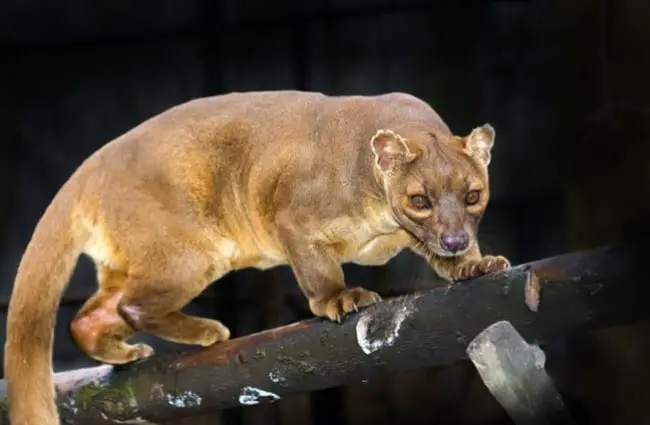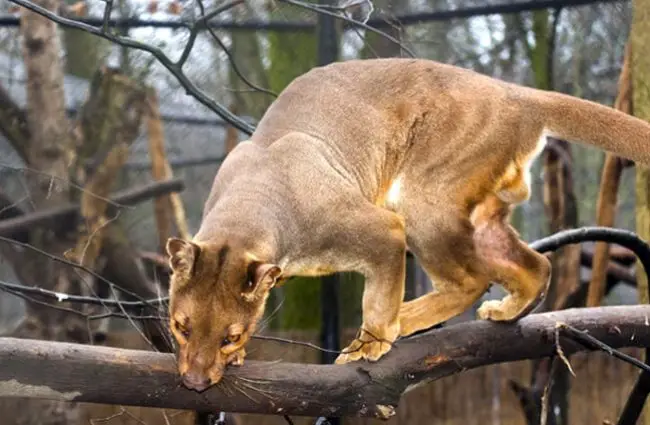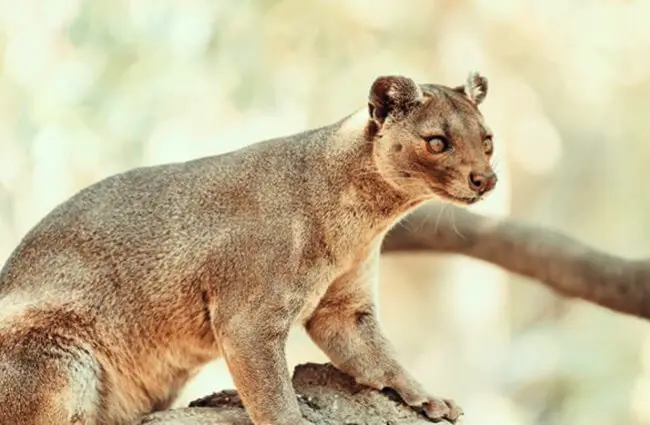The Elusive Fossa: Madagascar’s Unique Predator
Imagine a creature that blends the agility of a cat, the body of a small cougar, and the intelligence of a primate. This is the fossa, Cryptoprocta ferox, a truly remarkable carnivore found only on the island of Madagascar. More than just an interesting animal, the fossa plays a crucial role in its ecosystem and represents a fascinating case study in evolution. This guide delves into the world of the fossa, exploring its biology, behavior, habitat, and conservation status.

Understanding the Fossa
Physical Characteristics
The fossa is the largest mammalian carnivore native to Madagascar. Adults typically measure between 2.6 and 3 feet in body length, with a long, bushy tail adding another 2 to 3 feet. They weigh between 12 and 22 pounds. Their coat is short, dense, and generally reddish‑brown, though coloration can vary. Possessing semi‑retractable claws, flexible ankles, and a long tail used for balance, the fossa is remarkably well adapted for arboreal life. Its paws are wide, with sharp claws ideal for gripping branches and scaling trees. The face is cat‑like with forward‑facing eyes that provide binocular vision crucial for judging distances when leaping between branches.
Habitat and Distribution
The fossa is found throughout Madagascar, inhabiting a diverse range of habitats including rainforests, dry deciduous forests, spiny forests, and montane forests. They are remarkably adaptable, exploiting various environments. They prefer dense forest cover but also utilize more open areas for hunting. Fossa distribution is fairly widespread across the island, although population densities vary depending on habitat quality and prey availability. They demonstrate a strong preference for undisturbed forests, highlighting the importance of habitat conservation.
A Deep Dive into Fossa Biology
Evolutionary History
The fossa’s evolutionary story is particularly intriguing. It belongs to the Eupleridae family, a group of carnivores endemic to Madagascar. Genetic evidence reveals that the fossa is most closely related to the mongoose family, despite its superficial resemblance to cats. It is believed the fossa evolved from a mongoose‑like ancestor that arrived on Madagascar millions of years ago. Over time, it underwent significant adaptive radiation, becoming larger and more specialized for predation, filling a niche absent of other large carnivores on the island. This makes the fossa an excellent example of convergent evolution, where unrelated species develop similar traits due to similar ecological pressures.
Diet and Hunting Strategies
As a top predator, the fossa has a varied diet, but lemurs constitute the majority of its food, accounting for up to 70 percent. They also prey on tenrecs, rodents, lizards, birds, and occasionally larger animals such as crocodiles and feral pigs when available. The fossa is an opportunistic hunter, employing both terrestrial and arboreal strategies. They are incredibly agile climbers, often pursuing prey through the forest canopy. On the ground, they are swift and powerful runners. They typically stalk their prey before launching a surprise attack, using their sharp claws and teeth to subdue it. The fossa often caches surplus kills, returning to feed on them later.

Reproduction and Life Cycle
Fossa are generally solitary animals, except during the mating season, which occurs between September and December. Females typically give birth to a litter of one to three cubs after a gestation period of around 95 days. Cubs are born in dens, often within tree hollows or rock crevices. They depend on their mother for several months, learning essential hunting skills and survival techniques. Young fossa remain with their mother for up to two years before becoming independent. Sexual maturity is reached around two to three years of age. Fossa have a relatively long lifespan, with individuals living up to 15 to 20 years in the wild.
Ecological Role and Inter‑Species Interactions
The Fossa as a Keystone Species
The fossa plays a vital role in maintaining the health and balance of Madagascar’s ecosystems. As a top predator, it helps regulate populations of its prey species, preventing overgrazing and maintaining biodiversity. By targeting weaker or sick individuals, the fossa also contributes to the genetic health of prey populations. Its predatory activities influence the behavior and distribution of other animals in the ecosystem. The removal of the fossa could lead to cascading effects, disrupting the delicate balance of the environment.
Interactions with Other Animals
Fossa frequently interact with other predators in Madagascar, such as the Madagascar Harrier‑Hawk and various reptiles. These interactions can involve competition for resources or, in some cases, kleptoparasitism—stealing food from another predator. The fossa also has complex relationships with its prey, developing hunting strategies tailored to specific species. The fossa is known to sometimes follow lemur troops, predicting their movements and ambushing individuals. It also competes with other carnivores for access to carcasses.

Fossa and Humans
Historical and Cultural Significance
In Malagasy culture, the fossa holds a complex place. It is often viewed with a mixture of respect and fear, representing both power and cunning. Traditional stories and folklore frequently feature the fossa as a symbol of the forest and its mysteries. Historically, the fossa was sometimes hunted for its meat and pelt, but this practice has declined in recent years. Local communities often have a deep understanding of fossa behavior and ecology, passed down through generations.
Conservation Status and Threats
The fossa is currently listed as Vulnerable by the International Union for Conservation of Nature. The primary threats to its survival include habitat loss and fragmentation due to deforestation, hunting for bushmeat and traditional medicine, and conflict with humans over livestock. Deforestation driven by logging, agriculture, and mining is rapidly destroying the fossa’s habitat, reducing its range and isolating populations. Efforts to protect the fossa include establishing protected areas, promoting sustainable forestry practices, and educating local communities about the importance of conservation.
Encountering a Fossa in the Wild – Safety Precautions
While encounters with fossa are relatively rare, it is important to be prepared if you are hiking or camping in Madagascar. Maintain a safe distance from any fossa you encounter. Avoid direct eye contact, as this can be perceived as a threat. Never attempt to feed or approach a fossa. Keep food securely stored to avoid attracting them. If a fossa approaches you, slowly back away and make yourself appear large. Report any sightings to local authorities or conservation organizations.

Caring for Fossa in Captivity
Zookeepers caring for fossa in captivity must provide a stimulating and enriching environment that mimics their natural habitat. This includes providing ample climbing structures, such as trees, branches, and ropes. Enclosures should be large enough to allow for exploration and exercise. A varied diet consisting of meat, bones, and whole prey items is essential for maintaining optimal health. Zookeepers should also provide opportunities for foraging and puzzle‑solving to stimulate mental activity. Regular veterinary check‑ups and preventative healthcare are crucial for ensuring the well‑being of captive fossa. Enrichment programs designed to encourage natural behaviors are essential.

Final Thoughts
The fossa is a remarkable creature, a testament to the power of evolution and the incredible biodiversity of Madagascar. Its unique adaptations, complex behavior, and crucial role in the ecosystem make it a species worth protecting. By understanding the threats facing the fossa and supporting conservation efforts, we can ensure that this elusive predator continues to thrive in the forests of Madagascar for generations to come.

![Red Angus Closeup of a beautiful Red Angus cowPhoto by: U.S. Department of Agriculture [pubic domain]https://creativecommons.org/licenses/by/2.0/](https://animals.net/wp-content/uploads/2020/03/Red-Angus-4-238x178.jpg)




![Red Angus Closeup of a beautiful Red Angus cowPhoto by: U.S. Department of Agriculture [pubic domain]https://creativecommons.org/licenses/by/2.0/](https://animals.net/wp-content/uploads/2020/03/Red-Angus-4-100x75.jpg)

